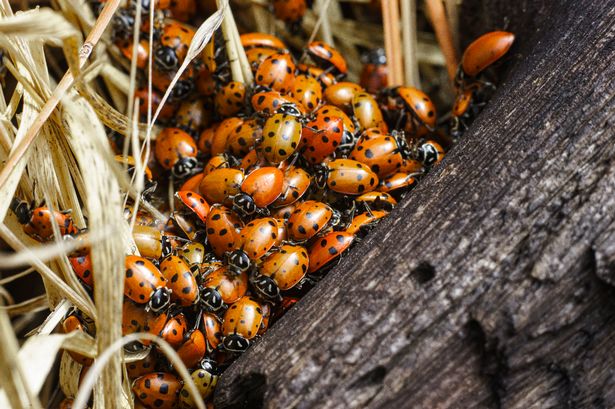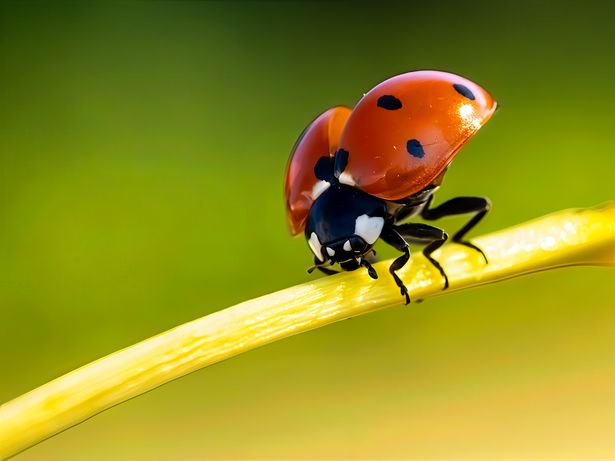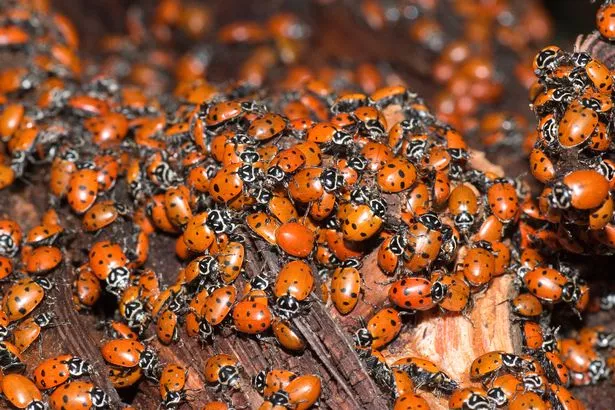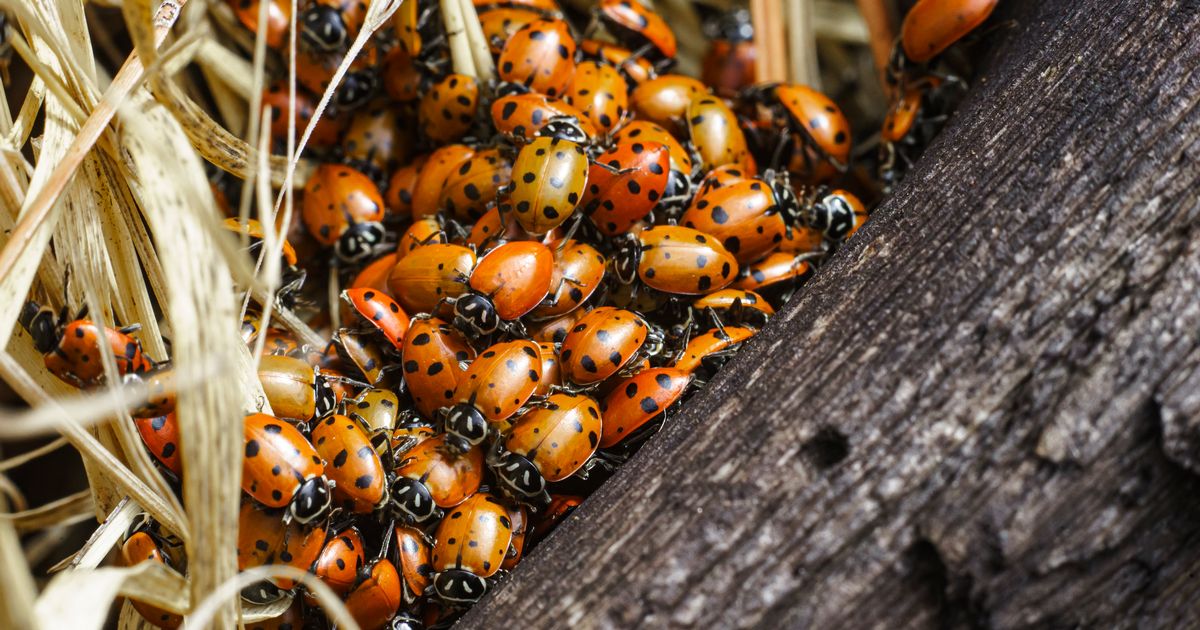An expert has revealed why so many harlequin ladybirds have been spotted swarming and invading homes across the UK this week Why your home might be filling with ladybirds at the moment(Image: Getty Images)
Why your home might be filling with ladybirds at the moment(Image: Getty Images)
Brits have been left baffled by ‘swarms’ of ladybirds flying outside and gathering on windows and walls this week, with some households reportedly invaded by hundreds of the tiny insects.
Social media has been awash with claims that ladybirds are ‘everywhere’ today (October 6).
One user wrote on X, formerly Twitter: “I don’t know what’s going on but there’s loads of ladybirds outside casually swarming around my house!” while another said “Ladybirds, everywhere! Is this the equivalent of flying ant day?”
But experts say there’s no need to panic. The sudden surge in sightings can be explained by ladybirds’ annual autumn migration as they seek shelter ahead of the colder months.
Professor Helen Roy at the UK Centre for Ecology & Hydrology and University of Exeter told the Manchester Evening News: “Winter is a tough time for ladybirds in Britain and so during the winter months they become dormant.
“Each species has a favoured place to spend the winter – some such as harlequin ladybirds enter buildings while 7-spot ladybirds tuck themselves under leaf litter.
“At this time of year they are moving around to find a good place to overwinter. On warm early October days many ladybirds will be seen flying around in search of a winter habitat.”
 Huge swarms of ladybirds could invade UK homes this week(Image: Getty Images)
Huge swarms of ladybirds could invade UK homes this week(Image: Getty Images)
Warm, sunny spells in early October can trigger the insects to start flying in search of somewhere cosy to spend the winter, which is why so many are being spotted around the UK this week.
Why ladybirds are ‘invading’ our homes
The ladybirds’ instinct to find warm, sheltered places often leads them indoors.
Max Barclay, Senior Curator of Beetles at the Natural History Museum, said in a blog post: “There are a number of species of ladybirds that hibernate in big clusters. Ancestrally harlequin ladybirds would probably have hibernated in big clusters in caves, hollow trees and other sheltered places.”
In absence of these, ladybirds may try to crawl into our homes through the small gaps along the edges of loose-fitting windows.
Experts say there’s no need to panic if a swarm of ladybirds enters your home. The UK Centre for Ecology & Hydrology said in a blog post advises you not to harm them.
 Ladybirds appear in houses in autumn searching for a warm, sheltered area(Image: Getty Images)
Ladybirds appear in houses in autumn searching for a warm, sheltered area(Image: Getty Images)
“Perhaps gather them gently into a box and put them in an outbuilding if they are in the way but, otherwise, just leave them where they are if possible,” it said in a blog post.
Do harlequin ladybirds carry disease?
Harlequin ladybirds are not native to the UK. They arrived in the country in 2004 and originate from eastern Russia, China and Japan.
These ladybirds are highly adaptable and come in many colour forms, from orange with black spots to almost black with red spots.
While these ladybirds can carry parasites and diseases – including a sexually transmitted disease – experts stress they’re harmless to humans
“[The STD] is a fungus that forms little scales on the wing cases on the outside of the ladybird,” said Max. “You can actually see it with your naked eye and so can tell whether the ladybird is infected. It just looks like a yellow crust on some parts of the ladybird’s exoskeleton.”
So while it might feel like the UK’s under a ladybird invasion today, experts assure us it’s simply a natural sign that autumn has arrived.

